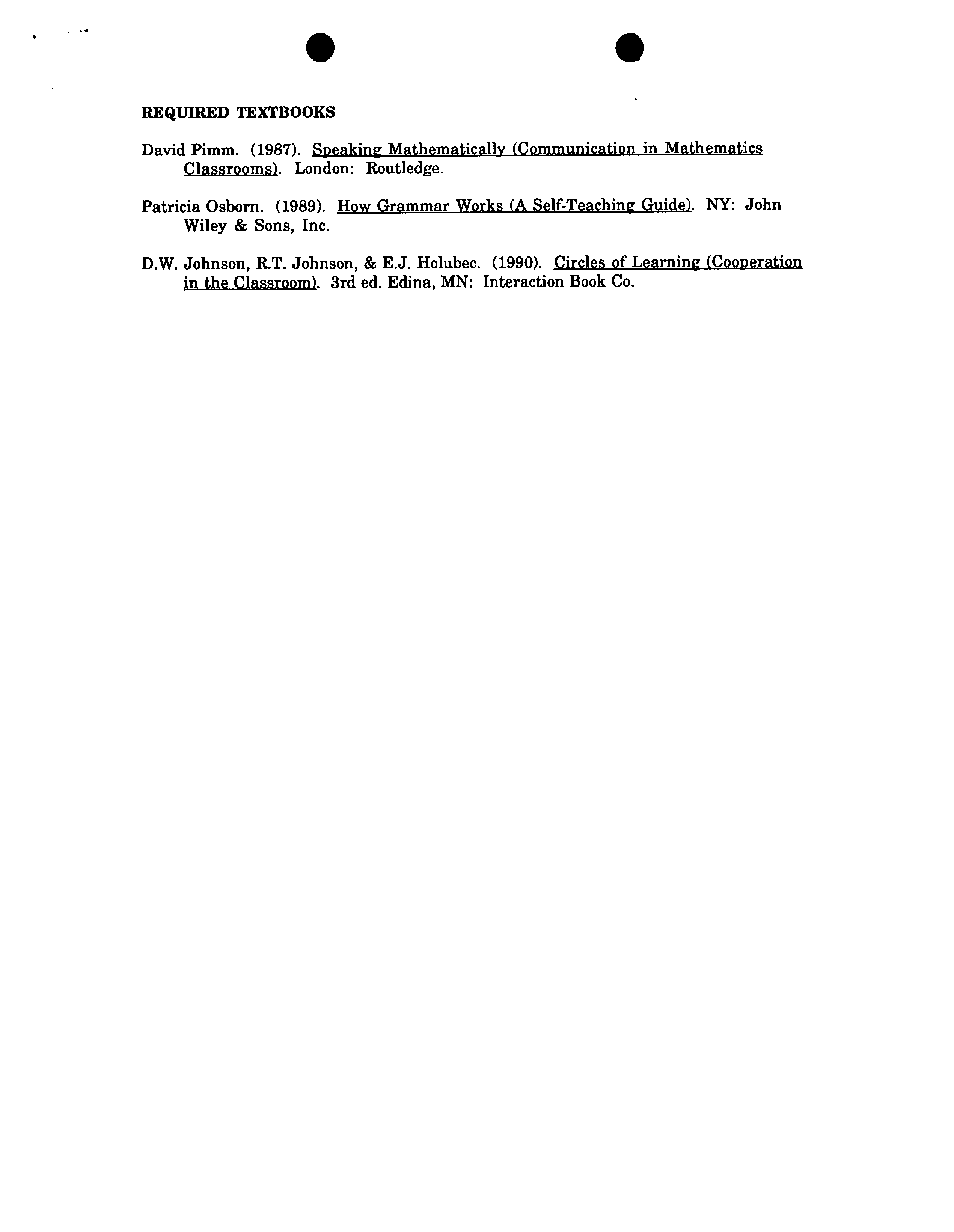. ?
. ?
SJMON FRASER UNWERS1TY ?
EDUCATION
367-4
INTEGRATING ESL LEARNERS IN DIFFERENT SCHOOL SUBJECTS:
?
SCIENCE AND MATHEMATICS
(E1.00)
Fall Semester, 1991
?
Instructor: Prof. Gloria Sampson
(September 3— November 29)
?
Office:
?
MPX 8671
Tuesdays, 4:30 - 8:20 p.m.
?
Phone: ?
291-4303
Location: MPX 7504
PREREQUISITES:
EDUC 4011402, or equivalent or permission of the instructor.
OBJECTIVES AND TOPICS
Because the kind of English used in science and mathematics differs greatly in
grammar and function from that used in other subjects, a general purpose English as a
second language course does not usually provide children and adolescents with the
proper language skills to handle science and math in the typical elementary or
secondary classroom. This course provides teachers of science and mathematics with
specific techniques for helping ESL learners in their classes to cope with the English
specific to the sciences and mathematics. This course is designed specifically for
science and math teachers with NO background in English literature or English
grammar. The following topics will be covered:
1.
How to assess the conceptual and linguistic knowledge of children and adolescents
with limited proficiency in English.
2.
How the English used in talking about and writing about science and mathematics
differs from ordinary English.
3.
How to structure lessons that have students who speak English as their native
language and English as their second language working together on the same
content, but on different levels of language.
4.
How to create progress files that appropriately assess second language learners in
science and math subjects or courses.
ASSIGNMENTS
1.
Students create a task related to the learning of science or math which will permit
them to assess the oral language competence of an ESL learner in comparison to the
competence of a native speaker of the same age. (40%)
2.
Students rewrite a chunk of text for a math or science lesson so that it is intelligible
to an ESL learner, focussing on one syntactic form commonly used in scientific
writing. (30%)
3.
Students create a sample progress file for an ESL student in a science or math
subject. (30%)
All assignments are based on the readings in this course.
S
REQUIRED TEXTBOOKS
David Pimm. (1987). Speaking Mathematically (Communication in Mathematics
Classrooms). London: Routledge.
Patricia Osborn. (1989). How Grammar Works (A Self-Teaching Guide). NY: John
Wiley & Sons, Inc.
D.W. Johnson, R.T. Johnson, & E.J. Holubec. (1990). Circles of Learning (Cooperation
in the Classroom). 3rd ed. Edina, MN: Interaction Book Co.


